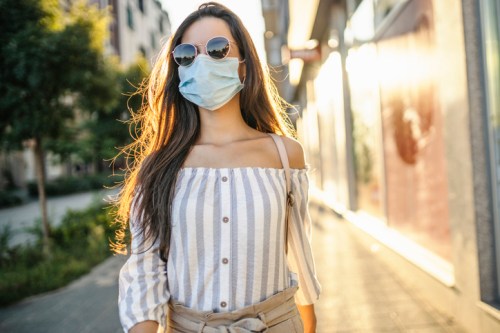‘I’m an Epidemiologist, and Here’s What You Need To Know About Subvariants and Variants’
Confused about the COVID-19 variant versus subvariant language? An epidemiologist explains using a helpful metaphor.

Over the last few years, many of us have had a crash course in virology. We added the word “coronavirus” to our day-to-day conversations, grasped the meaning of a “airborne” disease, and memorized the ins and outs of PPE. As COVID-19 continues to mutate, you may have heard that there’s a difference between a variant and a subvariant. So we asked an epidemiologist breaks down exactly why the distinction matters (and what it is in the first place).
Experts in This Article
infectious disease expert
All viruses have lineages, which the Center for Disease Control and Prevention (CDC) defines as “a group of closely related viruses with a common ancestor.” SARS-CoV-2 has many lineages, all of which cause COVID-19. Ahead, you’ll learn why viruses mutate and change in the first place, as well as how to understand the difference between a viral strain, variant, and subvariant.
Covid-19 variant versus subvariant: An epidemiologist explains
First, remember that every virus mutates—not just COVID-19. “Any virus that sticks around is bound to mutate, leading to different strains, variants, and subvariants,” says Jyotsna Shah, PhD, president of COVID-19 lab IGeneX, Inc. “In all living organisms, cells replicate, and when cells replicate at a rapid rate, sometimes errors, or mutations, occur. Often, these mutations leave the virus unable to survive, and it dies. However, sometimes the mutation happens in an area of the virus, not only allowing it to survive but to change its behavior.”
That said, each of these terms virus classifications has a distinct meaning—and knowing the 411 will help you understand not only COVID-19, but other viruses that may arise. For the sake of clarity, Dr. Shah uses dog breeds as a metaphor to talk about the virus. (Weird, I know, but stick with us.)
- Strain: “When we classify something as a strain, that means that its genetic material has undergone significant changes, leading to differences in viral behavior,” says Dr. Shah. You can think of viral strains like different breeds of dogs: While they all belong to the same species, each breed has unique characteristics. For example, SARS-COVID-2 is a strain of coronavirus and let’s compare it to a poodle.
- Variant: Variants haven’t undergone as many mutations as a viral strain, meanwhile. “Returning to the dog metaphor, a variant is still the same breed as its parent virus. So, while a variant typically won’t change anything fundamental about the virus, it might make it more transmissible, or cause more severe symptoms,” says Dr. Shah. Omicron is one example of a variant. Or, to continue the dog metaphor, a variant is kind of like a mini-poodle: It’s smaller, but maybe it can run a bit faster and squeeze into tinier spaces.
- Subvariant: “Finally, we arrive at the subvariant, as we are currently seeing with the Omicron [BA.2] variant,” says Dr. Shah. Subvariants have slight genetic mutation from their parent variant that sometimes make them hard to distinguish from said variant. But nevertheless, they are different. Each of these subvariants—including BA.2, BA.1.1, and BA.3. —is like a toy poodle in the context of our dog breed metaphor. It still looks like and acts like a mini-poodle (in fact, you may have trouble telling the apart), but it can fit into even smaller spaces and hide more easily than its parent variant.
Why this terminology even matters when we’re talking about COVID-19
Having this strange (but clarifying!) comparison in your back pocket because it will help you better understand COVID-19 in years to come. Omicron BA.2 is now considered the predominant variant of SARS-COVID-2, according to the World Health Organization (WHO)—but it’s possible that this will change. Poodle analogies aside, COVID-19 is quite serious and worthy of your earnest understanding.
“It can be distressing to constantly read about new variants of COVID-19, but it’s important to remind yourself that these variants are expected. Fortunately, so far, the subvariants of Omicron that we are observing do not appear to cause severe illness and death in as many individuals,” says Dr. Shah. It’s also important to continue masking up, washing your hands, social distancing, and prioritizing your vaccinations and boosters.
Oh hi! You look like someone who loves free workouts, discounts for cutting-edge wellness brands, and exclusive Well+Good content. Sign up for Well+, our online community of wellness insiders, and unlock your rewards instantly.
Sign Up for Our Daily Newsletter
Get all the latest in wellness, trends, food, fitness, beauty, and more delivered right to your inbox.
Got it, you've been added to our email list.










